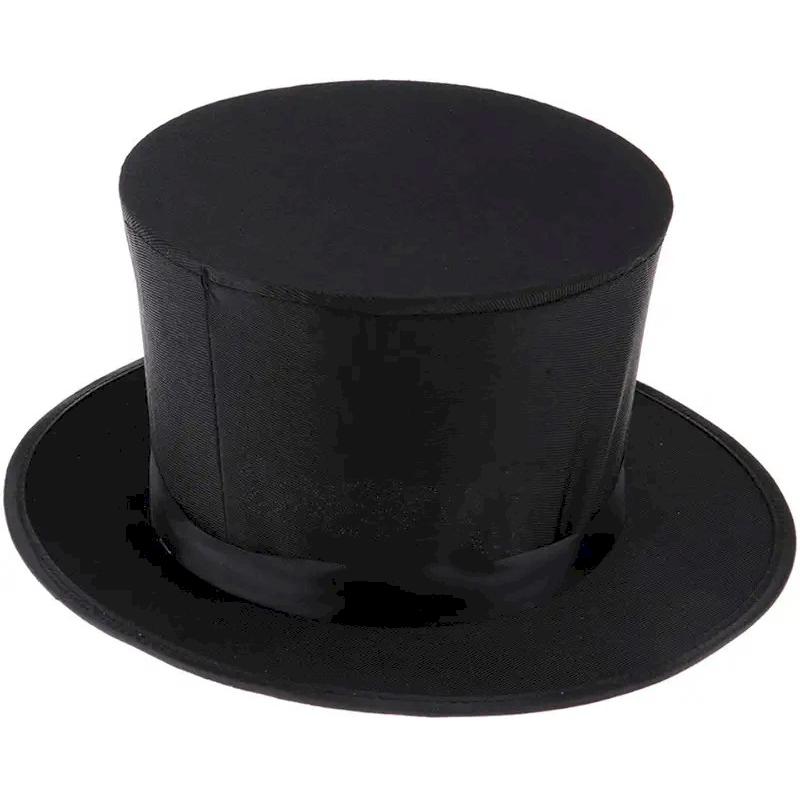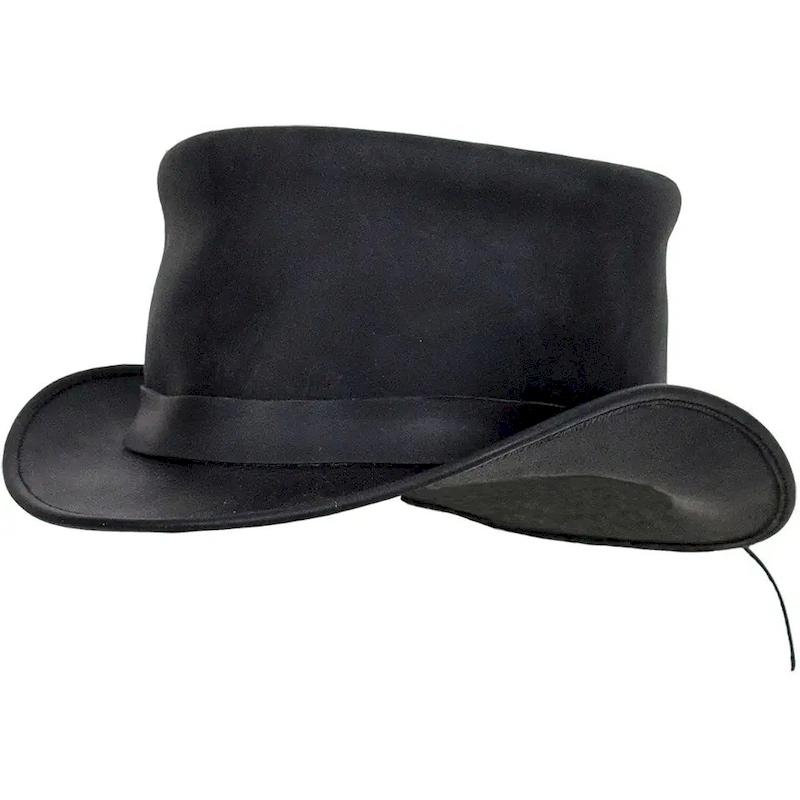The top hat is one of the most recognizable pieces of headwear in Western culture. It often stands for sophistication, elegance, and aristocracy. However, what does a top hat symbolize beyond its immediate aesthetic appeal? This fascinating accessory has graced the heads of various individuals throughout history. The meaning of the top hat has adapted to different cultural contexts and social strata. From its origins as a practical piece of clothing to its evolution into a symbol of high society, the top hat embodies social status, tradition, and fashion. To understand what a top hat symbolizes, we must delve into its rich history, different meanings attached to it, and its current role in modern society.

The Historical Origins of the Top Hat
The origins of the top hat date back to the early 19th century. This headwear first emerged in Britain between the late 1700s and early 1800s. Before the top hat’s rise, men typically wore simpler caps or bicorne hats common in military and naval uniforms.
The top hat quickly became a favorite among the upper classes. It also resonated with the emerging middle class during the Industrial Revolution. Men wore it for formal occasions, signaling wealth and social standing. The top hat’s tall, cylindrical silhouette and wide brim provided practical protection against the elements, especially rain.
As the hat grew popular, it marked important social events and occasions. You would typically see it during weddings, funerals, balls, and horse racing events. The top hat’s association with these gatherings solidified its position as a symbol of status and elegance.
The Top Hat’s Role in Fashion and Style
In terms of fashion, what does a top hat symbolize? Its role reaches beyond practicality; it represents style and formality. Wearing a top hat has historically indicated sophistication and decorum. Men of high repute donned the top hat, including politicians, aristocrats, and wealthy businessmen. This accessory became a staple in formal and evening attire.
During the Victorian era, the top hat was essential in a gentleman’s wardrobe. Fashion-conscious men wore it as a sign of taste and social sophistication. The rise of the top hat coincided with strict dress norms that conveyed class and respectability.
Even today, the top hat retains relevance. Designers incorporate it into modern runway shows, often in high-fashion designs. While we see less everyday wear, it still symbolizes unique style at costume parties, theatrical performances, and formal occasions.
Top Hats in Popular Culture
Beyond fashion, top hats have carved a significant niche in popular culture. What does a top hat symbolize in this realm? The top hat often appears in movies, literature, and music as a visual shorthand for class and cleverness.
In classic films like “Mary Poppins” and “The Great Gatsby,” characters wearing top hats often embody wealth, mystery, or romance. Their presence symbolizes character traits and deeper social commentary. For instance, in “The Great Gatsby,” Jay Gatsby’s top hat highlights his attempts to assimilate into high society, reflecting themes of aspiration and identity.
The character of the Mad Hatter from Lewis Carroll’s “Alice’s Adventures in Wonderland” adds a whimsical twist to the top hat’s symbolism. Here, the top hat represents whimsy, eccentricity, and life’s unpredictable nature. This shows that the top hat can embody diverse themes that resonate with different audiences.
From magicians to cartoon characters, the top hat appears everywhere in popular culture, suggesting cleverness and occasionally mischief. It prompts questions about identity and intent, making it a rich subject for exploration.
Social Significance of the Top Hat
The top hat conveys things beyond personal meaning; it reflects broader social themes. What does a top hat symbolize in terms of class and social hierarchy? Since its inception, the top hat has linked to elitism and social stratification. Wearing one historically indicated membership in the upper classes, differentiating the wearer from those of lower economic status.
At events like Ascot and the Royal Enclosure at horse races, the top hat symbolizes privilege and exclusivity. Only those with the right connections and status could wear such attire. This reinforces social boundaries and illustrates how fashion can shape social dynamics.
However, today, the top hat is becoming more democratic. What once belonged to the wealthy elite is now available in various styles and price ranges. This evolution allows it to represent not just privilege but also an appreciation for classic fashion among people from all walks of life. This shift demonstrates how symbols can change in meaning based on context and societal change.

Top Hats in Ceremonies and Symbolic Events
Certain events are now synonymous with top hats, further solidifying their symbolic meaning. They often appear during ceremonies like graduations, weddings, and formal balls. In each case, the top hat serves both practical and symbolic purposes, marking the significance of the occasion.
For example, during weddings, grooms may choose to wear a top hat as a traditional choice. It symbolizes commitment, formality, and a fresh start together. This moment carries gravitas, creating a tone of elegance and respect. At graduations, the top hat, alongside the gown, becomes a powerful representation of achievement and the transition into a new phase of life.
Additionally, during ceremonies such as the changing of the guard in Britain, the top hat represents authority and tradition. Wearing this accessory during these events deepens its symbolic significance, reflecting respect for customs and heritage.
Modern Interpretations and The Future of the Top Hat
Today, the meaning of the top hat continues to evolve. What does a top hat symbolize now? With vintage aesthetics gaining popularity, people are reintroducing the top hat into modern wardrobes. Younger generations view it not only as a relic of the past but also as a means of self-expression and individuality.
Fashion designers creatively integrate the top hat into contemporary styles, allowing new interpretations that challenge traditional norms. While typically seen at special occasions, you can also spot it at music festivals and alternative gatherings. In these contexts, it fosters creativity and appreciation for heritage.
The top hat is also appearing in diverse cultural settings, highlighting its adaptability. In certain subcultures, the top hat symbolizes nonconformity or artistic sensibilities. This showcases how its symbolism can shift dramatically based on the wearer’s intent.
Looking to the future, the revival of interest in vintage fashion suggests the top hat will remain relevant. Its versatility allows for ongoing reinterpretation, ensuring it continues to symbolize elegance in a constantly evolving world.
The Future of the Top Hat in Contemporary Culture
As we look ahead, what might the future hold for the top hat? The symbolism it carries will likely continue to evolve.
Influences of Social Media and Digital Culture
Digital culture and social media play significant roles in reshaping fashion trends. Platforms like Instagram encourage innovative approaches to style, and the top hat is no exception. Fashion influencers showcase creative ways to incorporate top hats, challenging conventional roles associated with this accessory.
As these platforms celebrate diverse styles, the top hat might rise in popularity beyond formal settings. Its presence in streetwear and casual events reflects a shift toward embracing individuality, allowing the top hat to symbolize eclectic fashion choices.
Sustainability and Conscious Fashion
Sustainable fashion is another emerging trend influencing the future of the top hat. As more consumers seek ethically made products, designers are exploring eco-friendly materials for classic accessories. The top hat’s revival in sustainability will showcase modern craftsmanship while honoring its historical significance.
This movement invites new generations to appreciate the craftsmanship behind the product. Additionally, creators may experiment with colors, materials, and designs that resonate with today’s values while preserving a timeless quality.

Conclusion
So, what does a top hat symbolize? The top hat embodies a tapestry of meanings that span history, fashion, culture, and social class. From its origins as a formal accessory for the upper echelons of society to its modern-day adaptations, it represents creativity and personal expression.
As we’ve explored, the top hat has become ingrained in our collective consciousness, serving as both a fashion statement and a representation of tradition, social dynamics, and identity. While people may wear it less often today, its cultural significance endures and invites new interpretations.
The future of the top hat remains bright as it adapts to cultural changes and sparks discussions about status, creativity, and self-expression. This timeless accessory will continue to engage and delight those who wear it, making it an enduring symbol of elegance and individuality.

